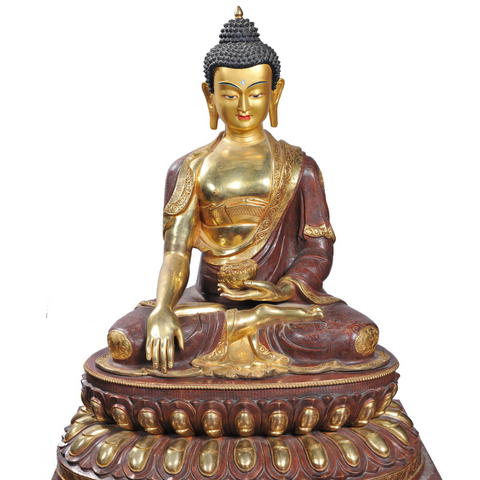Bhumisparsha Mudra, also known as the earth-touching gesture

Bhumisparsha Mudra, also known as the earth-touching gesture, is a symbolic hand gesture that has been used in various spiritual and religious practices throughout the world. It is a powerful symbol of spiritual enlightenment and has been depicted in various works of art, including sculptures and paintings.
The history of Bhumisparsha Mudra can be traced back to ancient India and the practice of Buddhism. In Buddhist tradition, this mudra symbolizes the moment when the Buddha achieved enlightenment and was able to defeat the demon Mara. According to Buddhist mythology, Mara, the demon of desire and delusion, tried to distract the Buddha from his path of enlightenment. However, the Buddha used his spiritual power to overcome Mara and achieved enlightenment, which is represented by the Bhumisparsha Mudra.
In Buddhism, Bhumisparsha Mudra is also known as the “gesture of calling the earth to witness”. The Buddha is depicted as touching the earth with his right hand, calling on the earth to witness his enlightenment. This gesture is a symbol of the Buddha’s deep connection to the earth and his realization that all things are impermanent and interdependent. The Bhumisparsha Mudra is considered a powerful symbol of spiritual enlightenment, wisdom, and compassion.
In Hinduism, Bhumisparsha Mudra is often associated with the god Vishnu. In Hindu mythology, Vishnu is considered the preserver of the universe and is depicted in a similar gesture to the Buddha, touching the earth with his right hand. This gesture symbolizes Vishnu’s power over the earth and his ability to control natural disasters.
In both Buddhism and Hinduism, Bhumisparsha Mudra is often depicted in art and is considered an important symbol of spiritual power and enlightenment. In Buddhist art, the Buddha is often depicted in a standing position, with his right hand touching the earth and his left hand resting on his lap in a meditative pose. In Hindu art, Vishnu is often depicted in a similar pose, touching the earth with his right hand and holding a conch shell in his left hand.
In addition to its use in Buddhism and Hinduism, Bhumisparsha Mudra has also been used in other spiritual and religious practices throughout the world. In Japan, Bhumisparsha Mudra is known as the “gesture of summoning the earth” and is used in Shinto and Buddhist practices. In China, Bhumisparsha Mudra is known as the “gesture of calling the earth to witness” and is used in Taoist and Buddhist practices.
In contemporary spirituality, Bhumisparsha Mudra is often used in meditation and yoga practices. This gesture is believed to help practitioners connect with the earth and tap into their spiritual power. By placing their hand on the ground, practitioners are able to ground themselves and connect with the earth’s energy. This connection is believed to help practitioners cultivate inner peace and spiritual enlightenment.
In conclusion, the history of Bhumisparsha Mudra is rich and diverse, encompassing various spiritual and religious practices throughout the world. Whether in Buddhism, Hinduism, or other spiritual traditions, Bhumisparsha Mudra is a powerful symbol of spiritual enlightenment and a reminder of the deep connection between humans and the earth.


